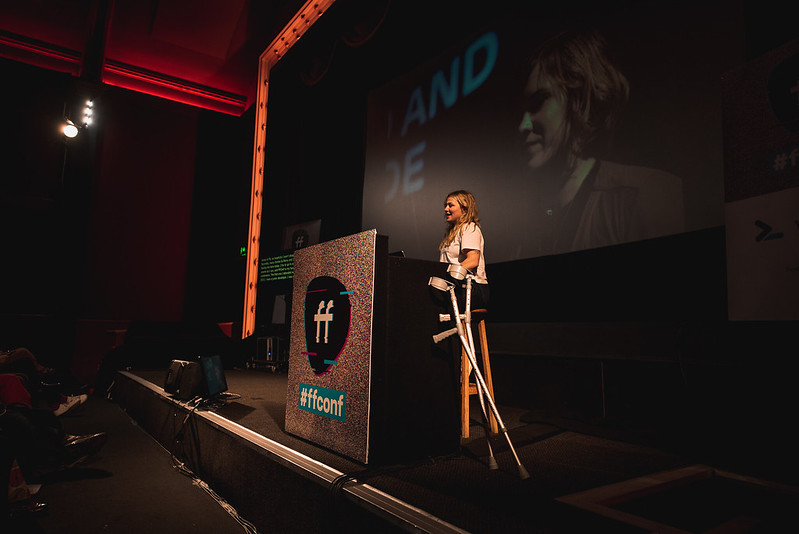Working towards a greener world from behind the keyboard

Audio
DownloadVideo
Watch on YouTubeTalk description
In what ways tech is affecting the environment & climate change? We'll discuss processes which devs can use in their work to create a greener web and implementable systematic changes within an organisation that'd make a positive impact on the world.
Session Summary
Natalia Waniczek shows us how software development drives environmental harm - yes, your code is part of the problem - and suggests green engineering principles such as life-cycle thinking, waste prevention and design separation to cut carbon footprints. She highlights examples like music streaming’s emissions and advises efficient coding, asset optimisation and choosing renewable-powered hosting. She urges devs to track digital carbon using tools like websitecarbon.com and climateaction.tech so we can keep improving.
View detailed generated session topics, quotes and video timestamps
Building a Greener Web: Climate Change and Technology
Introduction and Personal Journey (0m00s)
Natalia opens her talk by explaining her journey from being an enthusiastic junior developer in 2015 to becoming an environmentalist focused on the intersection of technology and climate change. She credits Lena's 2015 FFConf talk about responsibility in tech as the catalyst that shaped her career path towards working with nonprofits.
"It was about responsibility that we have a (full)stack'ies and about basically the privileged position that we are in."
"And that talk is the reason why I've become the developer I am and why I've chose to work with nonprofit sector."
The Climate Crisis Reality (2m28s)
The talk presents stark statistics about climate change, emphasising that we have only 10 years to prevent irreversible damage if global temperatures rise by 1.5°C. She explains how human activities have become the primary driver of climate change since the 1970s, with fossil fuel emissions returning to pre-pandemic levels.
"According to the UN, we only have 10 years left to prevent irreversible damage from climate change."
"In the most recent seven years, the most recent seven years have been the warmest there have ever been."
"It is the human caused climate change that have made the heat wave in the UK 10 times more likely to happen."
Technology's Environmental Impact (10m26s)
The internet's carbon footprint is revealed to be substantial, accounting for roughly 3.7% of global greenhouse gas emissions - equivalent to the entire aviation industry or Germany's total emissions. This impact comes from three main sources: data centres, data transfer, and device energy consumption.
"Internet is responsible for roughly 3.2 greenhouse, roughly 3.2 global greenhouse gas emissions."
"So 3.7% is the latest data and that roughly corresponds to aviation."
"Data centres need the energy to power and to be powered up and to be cooled down."
Data Centres and Green Hosting (13m02s)
Data centres consume 3% of global electricity and produce 2% of greenhouse gas emissions, but this presents an opportunity for immediate positive change. Natalia advocates for choosing hosting providers powered by renewable energy and warns against offsetting schemes as greenwashing.
"We have control over where we hosting our sites and picking green service powered by renewable energy with tangible sustainability goals is the way forward."
"You can't be carbon neutral or carbon negative. From like a scientific point of view, offsetting is bad."
Web Development Best Practices (16m20s)
The average webpage has grown from 1.6MB in 2014 to 2.2MB for desktop in 2022, highlighting the need for efficiency. Natalia emphasises that sustainable design means clearer, more accessible websites that perform better while being environmentally friendly.
"From a development point of view, it's all about efficiency and performance."
"Design is the first stage of it. And doing less, making sites more efficient... will be clearer design, easier to read, as well as more performant, more accessible."
Practical Solutions for Developers (18m09s)
The talk provides concrete actions developers can take, including optimising images (using WebP or AVIF formats), lazy loading, avoiding autoplay videos, and removing unnecessary tracking scripts. She introduces tools like the Website Carbon Calculator for measuring a site's environmental impact.
"WebP, for example, is 30% smaller than JPEG and has I believe 96% browser support."
"Everyone hates autoplaying videos... it's not good for the users, it's inaccessible, and it's just gonna cost a lot."
Organisational Change (22m04s)
Beyond individual actions, Natalia suggests systematic changes within organisations, such as appointing an environmental officer, creating internal green policies, choosing plant-based catering, and opting for low-carbon travel options for business purposes.
"We can appoint someone who could be leading that change within the organisations that we work at."
"We can write like internal policies, what we can do as an organisation to be a bit greener."
Resources and Hope (25m14s)
The talk concludes with resources including Climate Action Tech community, the Principles of Sustainable Software Engineering, and Tom Greenwood's "Sustainable Web Design" book, ending on an optimistic note about the potential for positive change.
"So we sort of only have 10 years left, but I think we still have 10 years left."
"I think we can still take those little changes at work, day to day jobs... And let's work towards making the web a bit greener."
About Natalia Waniczek
My dad bought us our first computer when I was 2 which meant I was exposed to technology from a very young age. As I was growing up I was a hybrid of an athlete and a nerd. Deep down I always knew I'd end up working with tech in one way or another!